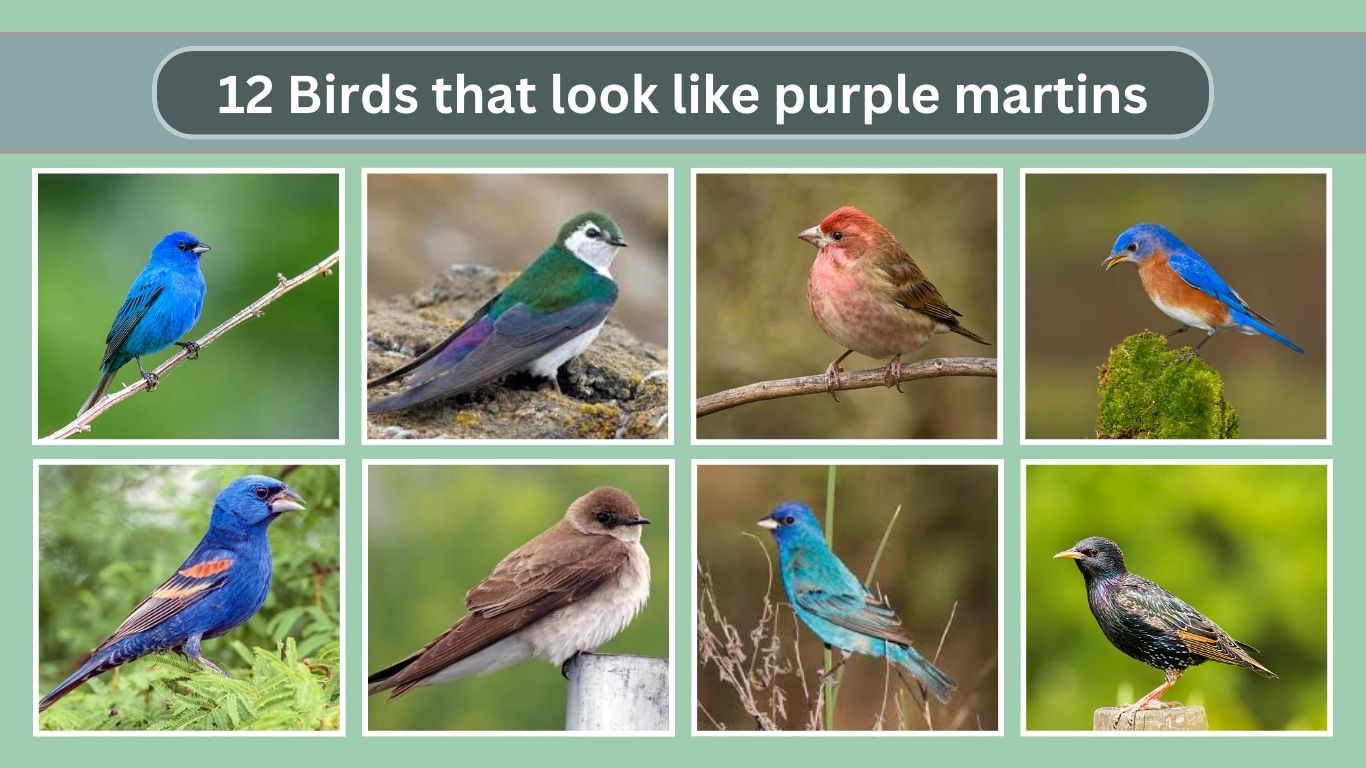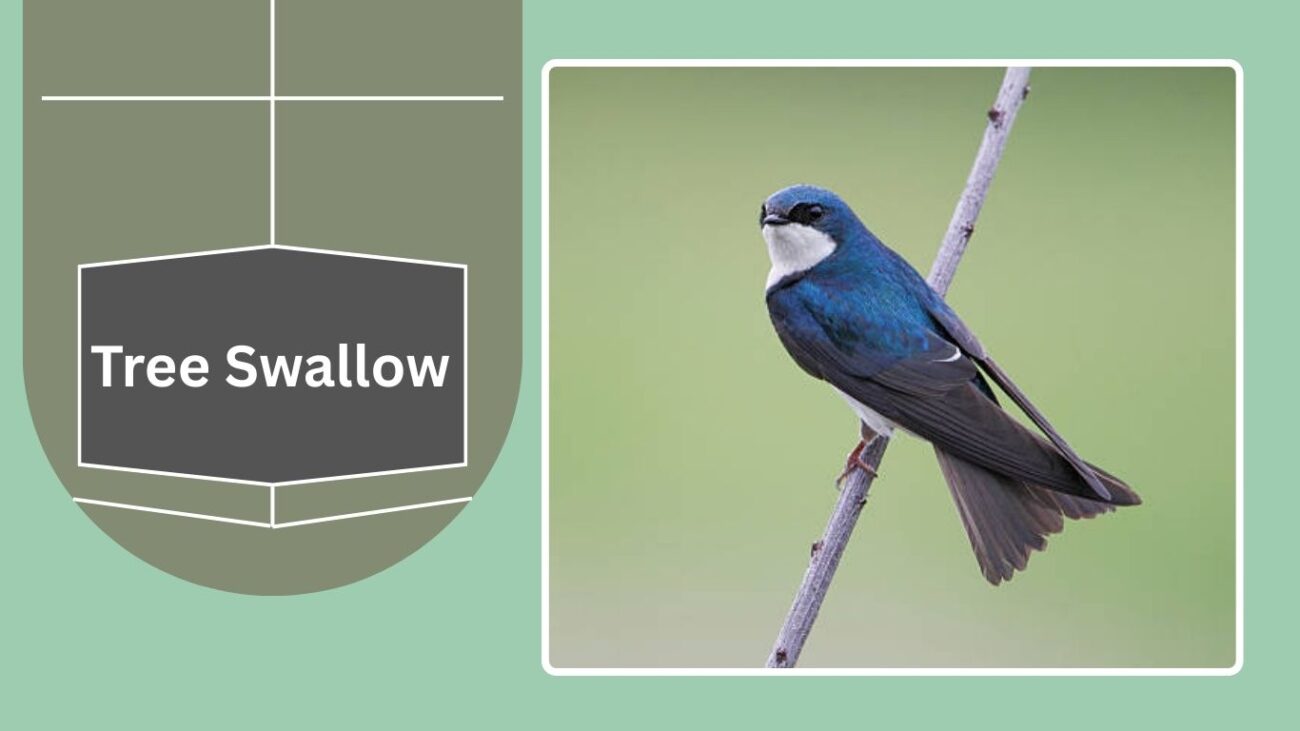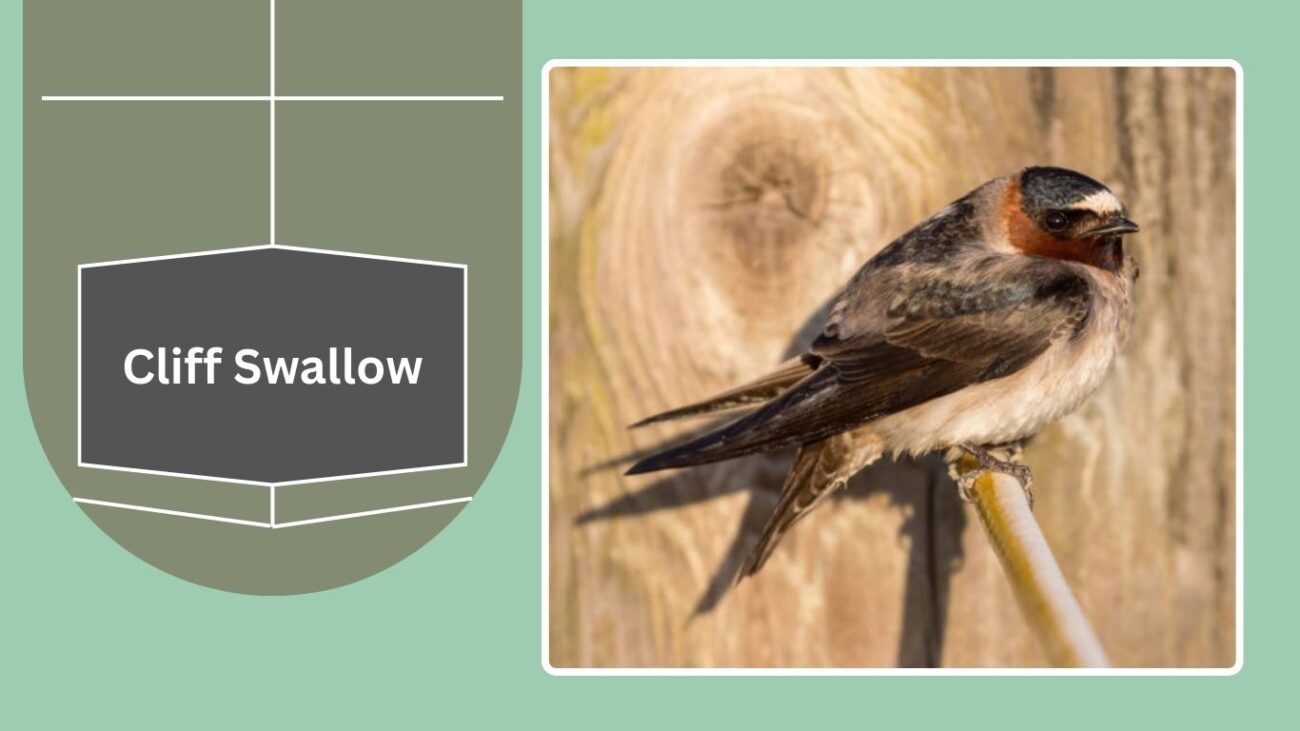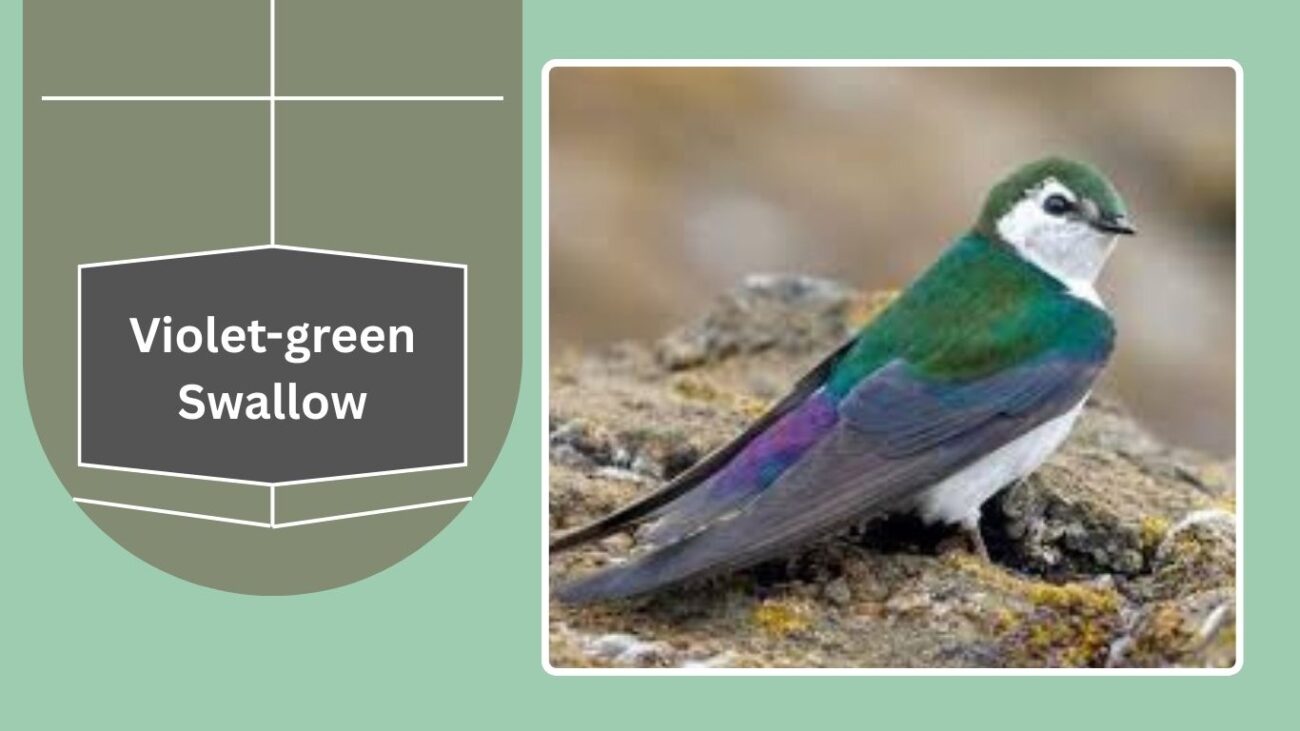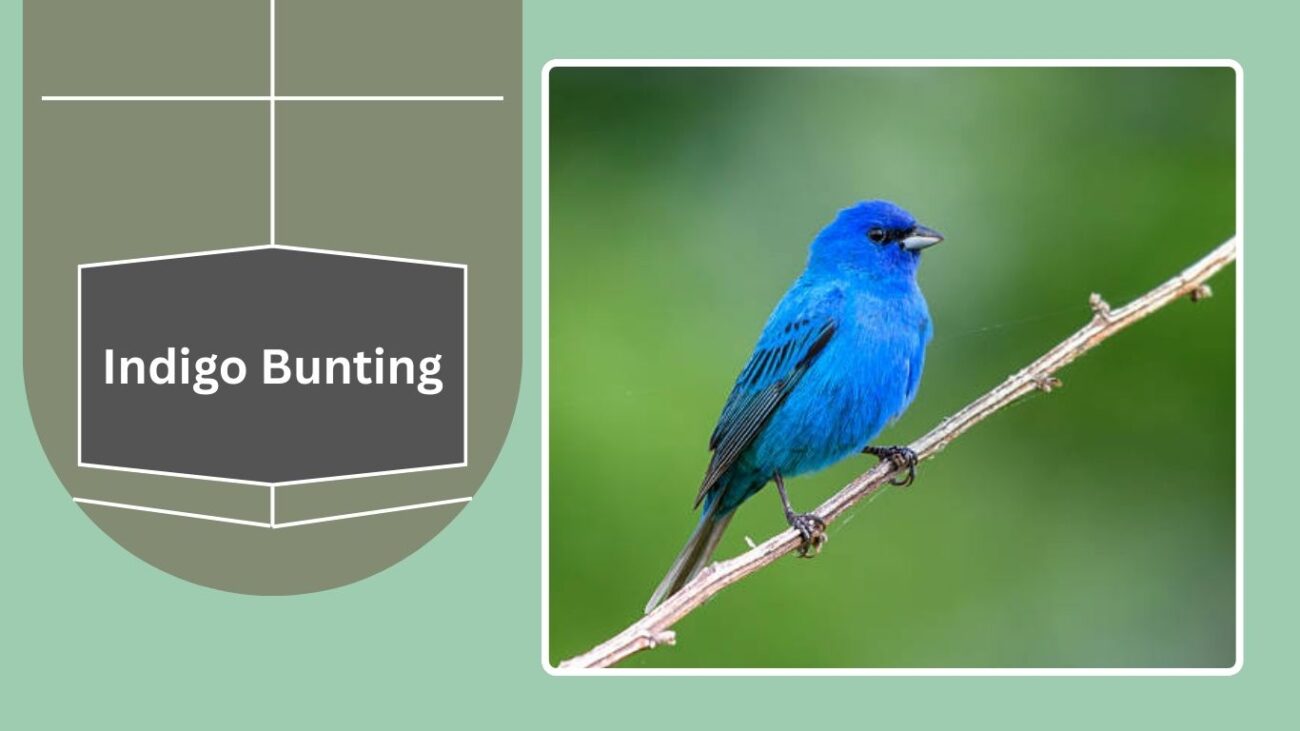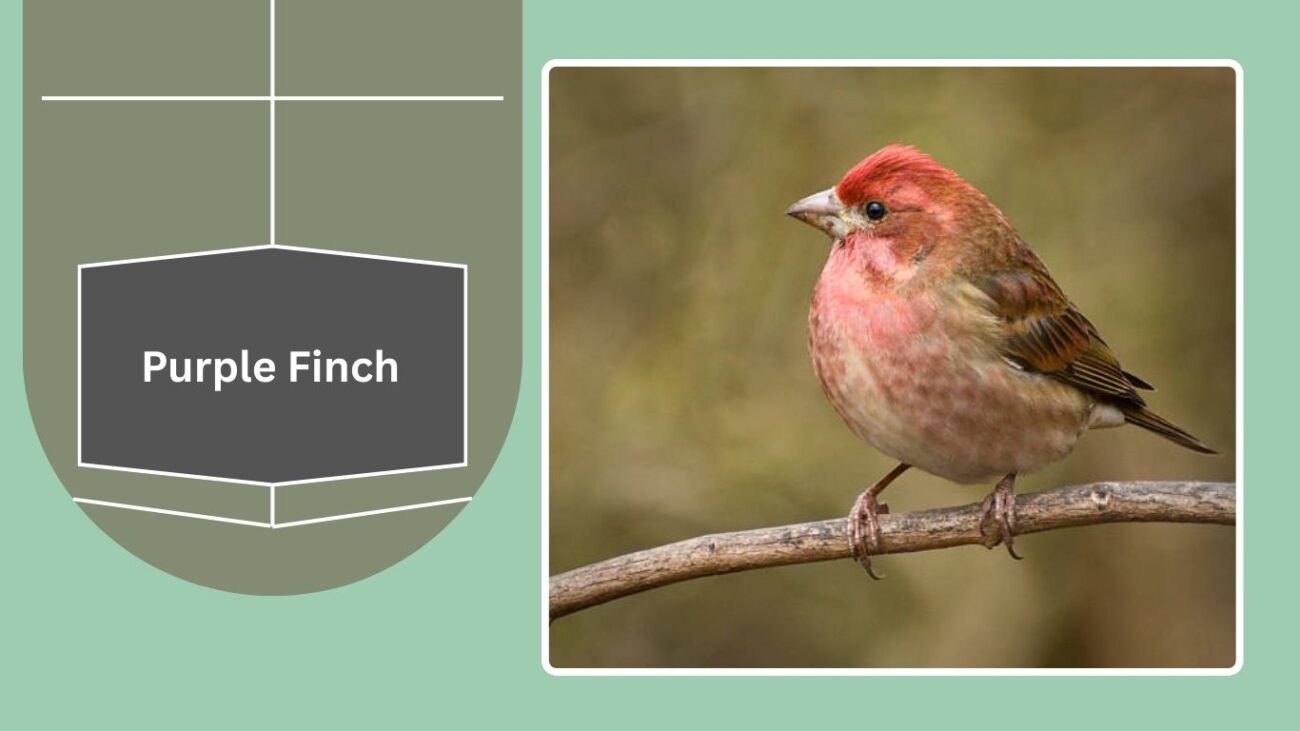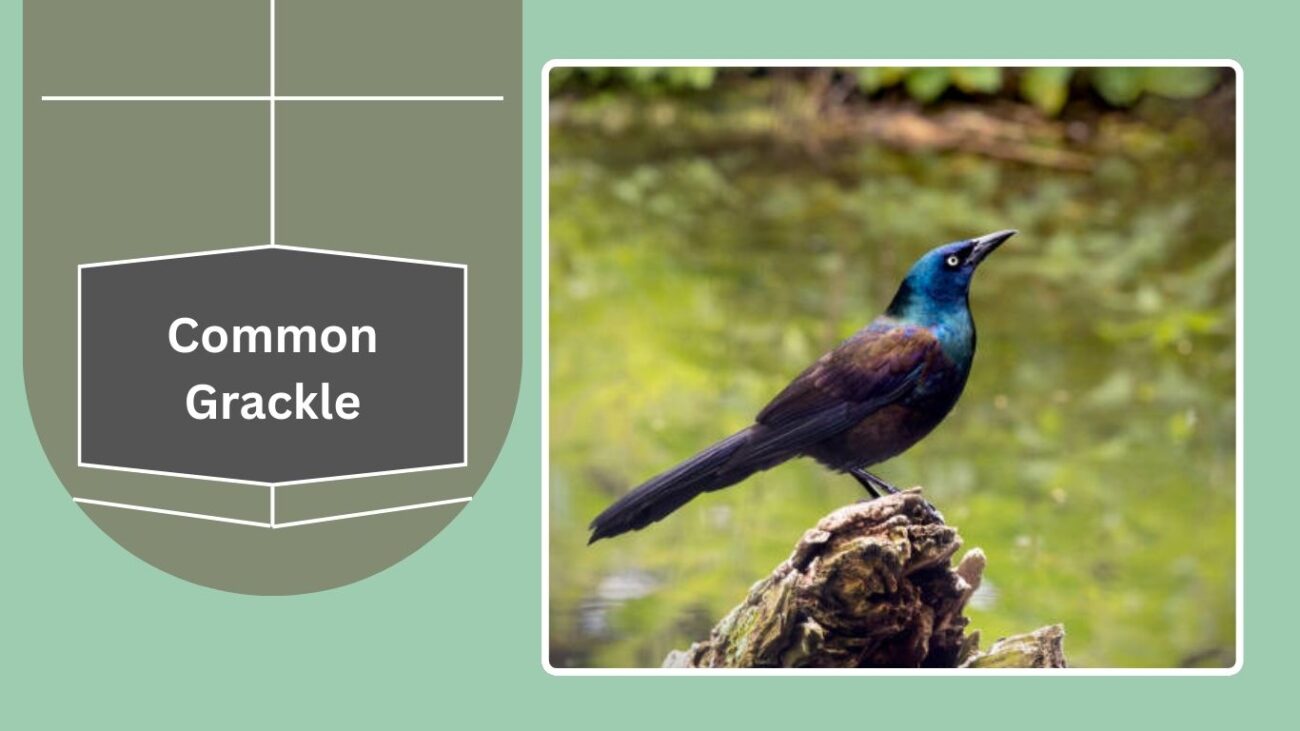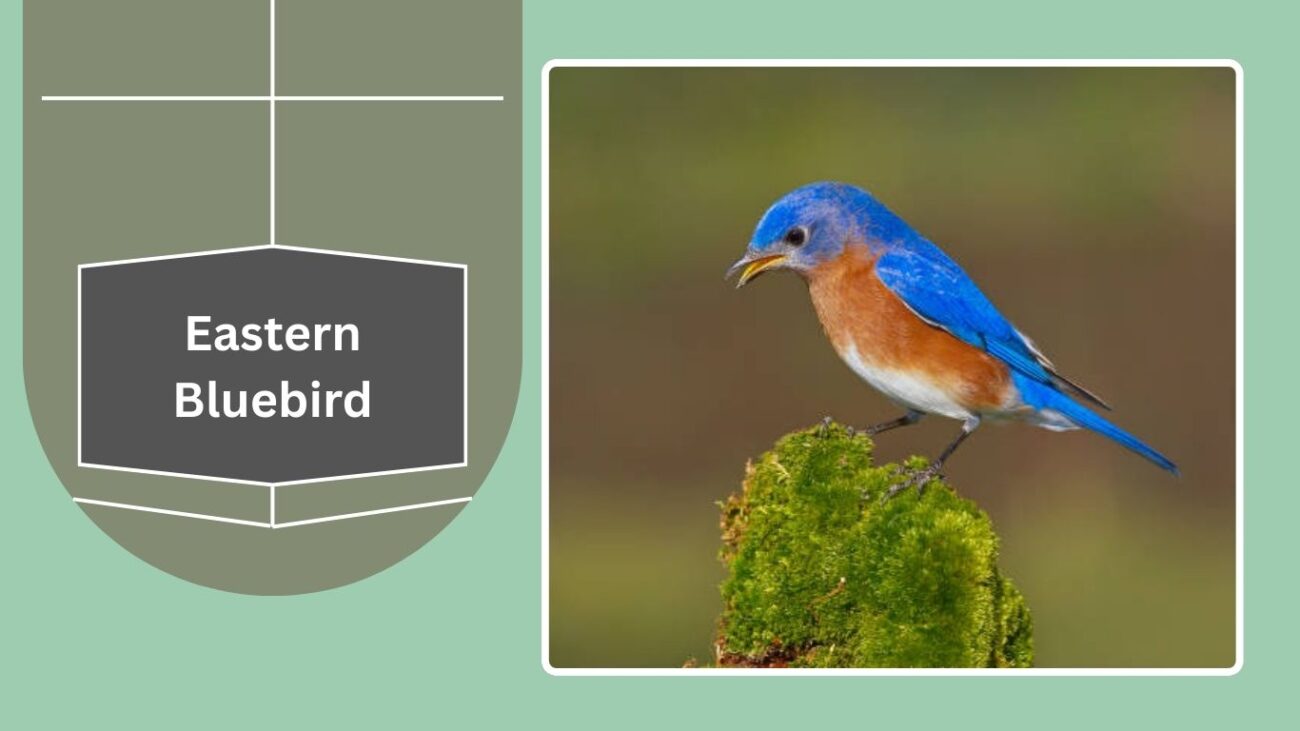Purple Martins are admired for their glossy plumage, graceful flight, and social nature, but many other birds share similar traits that can make identification tricky. From swallows with shiny blue backs to buntings and starlings with striking colors, these species often cause birdwatchers to do a double take. In this guide, we’ll explore 12 birds that resemble Purple Martins and highlight their key differences.
1. Tree Swallow
The Tree Swallow (Tachycineta bicolor) is a small migratory bird often mistaken for Purple Martins due to its shiny blue plumage and swift flight. These swallows are commonly found near open fields, lakes, and wetlands, where they nest in tree cavities and birdhouses. Their graceful aerial maneuvers make them easy to confuse with martins when seen at a distance.
Identification
- Size: About 5–6 inches long
- Color: Iridescent blue-green back with white underparts
- Wings: Long, pointed wings
- Tail: Slightly forked, less pronounced than Purple Martins
- Bill: Small and short
Habitat
Tree Swallows prefer open habitats near water, such as marshes, meadows, and lakeshores. They rely on cavities for nesting, including old woodpecker holes or man-made nest boxes.
Diet
Their diet consists mainly of flying insects like mosquitoes, flies, and beetles. They are excellent aerial hunters and spend most of their time catching prey mid-flight.
Behavior
Tree Swallows are highly social, often forming colonies during breeding season. They are agile fliers and may perform quick dives and turns while foraging. In migration, they gather in large flocks before traveling to Central and South America.
2. Barn Swallow
The Barn Swallow (Hirundo rustica) is one of the most widespread swallow species in the world and is often confused with Purple Martins because of its similar sleek body and swift flight style. Unlike martins, Barn Swallows have distinctive long tail streamers and a rusty-colored throat and underparts that set them apart.
Identification
- Size: Around 6–7.5 inches long
- Color: Glossy blue back and wings with reddish-brown throat and forehead
- Tail: Deeply forked with long streamers
- Underparts: Buff to rufous (rusty) color
- Bill: Small, black, and slightly curved
Habitat
Barn Swallows thrive in open countryside, farmland, and areas near human settlements. They often build mud nests under bridges, barns, and eaves of houses.
Diet
They primarily feed on flying insects such as flies, beetles, and moths, which they catch while gliding swiftly through the air.
Behavior
Barn Swallows are social birds, often nesting in colonies. Their acrobatic flight patterns and frequent association with people make them familiar and easily spotted in rural and suburban areas.
3. Bank Swallow
The Bank Swallow (Riparia riparia) is the smallest swallow species in North America and is sometimes mistaken for Purple Martins due to its aerial feeding habits and flocking behavior. Though smaller and less colorful, their swift movements in open skies make them look similar when flying at a distance.
Identification
- Size: About 4.5–5 inches long
- Color: Brown upperparts with a distinct dark brown breast band
- Underparts: White belly and throat
- Wings: Long and narrow for fast, agile flight
- Bill: Small and short
Habitat
Bank Swallows prefer sandy banks, river edges, and coastal cliffs where they dig nesting burrows. They are highly dependent on vertical soil banks for successful breeding.
Diet
Their diet consists mainly of small flying insects like midges, mosquitoes, and flies. They hunt in flocks, darting and swooping low over water or fields.
Behavior
Bank Swallows are very social, often nesting in large colonies with dozens or even hundreds of burrows close together. They are migratory, spending winters in Central and South America.
4. Cliff Swallow
The Cliff Swallow (Petrochelidon pyrrhonota) is a colonial bird that can resemble Purple Martins in flight because of its swift, acrobatic movements. It is distinguished by its pale rump and unique square-shaped tail compared to the martin’s forked one.
Identification
- Size: About 5–6 inches long
- Color: Glossy blue back with a pale forehead patch
- Rump: Light or whitish, very noticeable in flight
- Throat: Chestnut-colored
- Tail: Short and squared, unlike the forked tails of martins and Barn Swallows
Habitat
Cliff Swallows nest in large colonies on cliffs, bridges, buildings, and other structures. They construct mud nests under overhangs, often clustered together in large numbers.
Diet
Their diet mainly includes flying insects such as mosquitoes, beetles, and flies. They forage in flocks, swooping and darting through the air in open spaces.
Behavior
Cliff Swallows are highly social and noisy. They are known for building gourd-shaped mud nests in colonies that may contain hundreds of pairs. During migration, they travel in large groups across North and South America.
5. Northern Rough-winged Swallow
The Northern Rough-winged Swallow (Stelgidopteryx serripennis) is a small, plain swallow that may look like a Purple Martin in flight because of its aerial feeding style. Unlike the martin’s glossy plumage, this bird has more muted brown coloring, making it less flashy but still similar in shape and behavior.
Identification
- Size: About 5–6 inches long
- Color: Brown upperparts with light, whitish underparts
- Wings: Long and narrow, adapted for agile flight
- Tail: Slightly notched but not deeply forked
- Bill: Small and short
Habitat
These swallows are commonly found near rivers, lakes, and quarries. They nest in burrows, crevices, and even drainage pipes, preferring areas close to water.
Diet
Their diet mainly consists of small flying insects such as gnats, mosquitoes, and beetles. They often forage low over water surfaces.
Behavior
Northern Rough-winged Swallows are less social than other swallow species, usually nesting alone or in small groups rather than in large colonies. They are migratory, spending winters in Central America and the northern parts of South America.
6. Violet-green Swallow
The Violet-green Swallow (Tachycineta thalassina) is a striking bird that can resemble Purple Martins due to its shiny plumage and fast, agile flight. Its glossy violet back and greenish hues make it stand out, but from a distance, its overall look and behavior can cause confusion with martins.
Identification
- Size: Around 4.5–5.5 inches long
- Color: Iridescent green back with violet wings and rump
- Underparts: Bright white belly and throat
- Wings: Long and pointed for swift flight
- Tail: Slightly forked, not as deep as Barn Swallows
Habitat
These swallows are typically found in open woodlands, mountain valleys, and near water sources. They also use nest boxes or tree cavities for breeding.
Diet
Their diet consists of small flying insects such as flies, beetles, and mosquitoes, which they catch while performing agile flight maneuvers.
Behavior
Violet-green Swallows are social and often nest in loose colonies. They are excellent fliers and spend much of their time high above ground hunting insects. During migration, they travel in large flocks to Central America and Mexico for winter.
7. Blue Grosbeak
The Blue Grosbeak (Passerina caerulea) is not a swallow but can resemble Purple Martins at a glance because of its deep blue coloration and medium-sized body. Its slower, more deliberate flight sets it apart, but when perched or seen from afar, the similarity in plumage can cause confusion.
Identification
- Size: About 6–7 inches long
- Color: Rich deep blue overall in males; females are brown with blue tinges
- Markings: Two chestnut wing bars visible on both sexes
- Bill: Large, thick, and conical for cracking seeds
- Tail: Medium length, slightly notched
Habitat
Blue Grosbeaks prefer shrubby fields, woodland edges, and overgrown areas. They are often found in thickets near streams or open farmlands.
Diet
Their diet is a mix of seeds, grains, and insects. During summer, they consume many grasshoppers, caterpillars, and beetles to feed their young.
Behavior
These birds are solitary or found in pairs during the breeding season. Males are known for their rich, warbling songs sung from exposed perches. They migrate to Central America during winter.
8. Indigo Bunting
The Indigo Bunting (Passerina cyanea) is a small, vibrant songbird that can be mistaken for a Purple Martin due to its bright blue plumage. However, unlike martins, Indigo Buntings prefer perching in open fields and singing rather than catching insects in flight.
Identification
- Size: About 4.5–5 inches long
- Color: Males are bright indigo blue all over; females are brown with faint streaks
- Bill: Short, thick, and conical, suited for seeds
- Wings: Shorter compared to swallows and martins
- Tail: Straight-edged, not forked
Habitat
Indigo Buntings are common in farmlands, open woodlands, and shrubby areas. They are often seen perched on fence lines or tree tops, singing during the breeding season.
Diet
They primarily eat seeds, grains, and berries, but during summer they add insects such as grasshoppers and caterpillars to their diet.
Behavior
Males are known for their long, cheerful songs, especially during breeding. Indigo Buntings migrate at night, guided by the stars, traveling to Central and South America for winter.
9. Purple Finch
The Purple Finch (Haemorhous purpureus) is a medium-sized finch that can sometimes be confused with Purple Martins because of its body shape and plumage tones. While it lacks the martin’s glossy blue sheen, the reddish coloring of the males can give a similar impression from a distance.
Identification
- Size: About 5–6 inches long
- Color: Males have a raspberry-red head, chest, and back; females are brown and streaked
- Bill: Short, conical, and suited for cracking seeds
- Wings: Short and broad compared to martins
- Tail: Slightly notched, not forked
Habitat
Purple Finches are often found in coniferous and mixed forests, as well as orchards and suburban areas. In winter, they frequently visit backyard feeders.
Diet
Their diet mainly consists of seeds, buds, and berries. They also eat some insects, especially during the breeding season.
Behavior
Purple Finches are less aerial than martins and spend much of their time foraging in trees or visiting feeders. Males sing sweet, warbling songs, especially in spring and summer. They migrate southward during the winter months.
10. European Starling
The European Starling (Sturnus vulgaris) is a highly adaptable bird that may look like a Purple Martin at first glance due to its similar size, dark plumage, and flocking behavior. However, starlings often have a speckled appearance and shorter tails that distinguish them.
Identification
- Size: About 7–8.5 inches long
- Color: Iridescent black with green and purple sheen, often speckled with white spots
- Bill: Yellow in breeding season, darker in winter
- Wings: Short and pointed, giving them rapid, direct flight
- Tail: Short and squared, unlike the forked martin tail
Habitat
European Starlings thrive in cities, farmland, and open fields. They are cavity-nesters and frequently use holes in buildings, trees, or nest boxes.
Diet
Their diet includes insects, earthworms, berries, fruits, and seeds. They are opportunistic feeders, often seen foraging on the ground in large flocks.
Behavior
Starlings are highly social, often gathering in huge flocks called murmurations, which perform synchronized aerial displays. They are aggressive around nest sites and often outcompete native species.
11. Common Grackle
The Common Grackle (Quiscalus quiscula) can resemble a Purple Martin from a distance because of its glossy plumage and medium body size. However, grackles are larger and have longer tails, along with a more iridescent sheen that shows hints of purple, bronze, and green.
Identification
- Size: About 11–13 inches long
- Color: Iridescent black with purple and green highlights
- Eyes: Bright yellow, very noticeable
- Bill: Long and slightly curved
- Tail: Long, keel-shaped, unlike the forked tail of martins
Habitat
Grackles are common in open woodlands, farmland, parks, and suburban areas. They often forage on lawns, fields, and near water sources.
Diet
They are omnivores, feeding on insects, grains, fruits, and even small animals like frogs or eggs. Their diet is more varied compared to the insect-heavy diet of martins.
Behavior
Common Grackles are social and often seen in noisy flocks. They are aggressive around feeders and nesting areas. During migration and winter, they form large roosts with other blackbirds.
12. Eastern Bluebird
The Eastern Bluebird (Sialia sialis) is sometimes mistaken for a Purple Martin because of its blue plumage and similar size. However, its reddish-orange breast and more upright perching behavior clearly set it apart.
Identification
- Size: About 6–8 inches long
- Color: Bright blue upperparts with rusty-red throat and chest
- Underparts: White belly
- Bill: Small and straight
- Tail: Medium length, not forked
Habitat
Eastern Bluebirds are commonly found in open fields, orchards, meadows, and forest edges. They nest in tree cavities and readily use nest boxes provided by people.
Diet
Their diet includes insects such as beetles, grasshoppers, and caterpillars in summer, and fruits and berries during colder months when insects are scarce.
Behavior
Eastern Bluebirds are less aerial than martins, often seen perching on fences or wires while scanning for prey. They are social in winter flocks but territorial during breeding. Their soft, melodious songs add to their charm.

